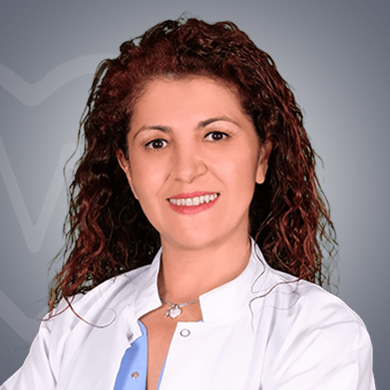
8 Years of experience
Speaks: English
Listed below are some of the conditions that surgical neurologist Hatice Demirbag treats:
Breast cancer surgery is performed to remove the specific area of cancer in the breasts. The surgeon removes cancer and healthy tissues all around it. You usually have to undergo radiotherapy for the breast after this kind of surgery.
People may experience both symptoms and signs of cancer, and this shows that something is going abnormal in the body. Also, recognizing these indicators could lead to an earlier diagnosis of the disease and possibly of better treatment. When cancer grows, the organs, nerves, and blood vessels are a little compressed, which can lead to signs and symptoms. Cancer can produce the below-listed conditions However, symptoms might vary from person to person. Every condition has its symptoms:
You can see Dr Hatice Demirbag between 11 am and 6 pm from Monday to Saturday. The doctor is not available on Sunday.
The below-listed popular procedures for cancer treatment are performed by Dr. Hatice Demirbag
The doctor has rich experience in performing complex cases with accuracy. The surgeon has performed a large number of procedures with a high success rate and adheres to medical protocols to ensure patient safety and speedy recovery. The specialist is proficient in using the latest techniques to perform the procedures and ensures that the patient has a speedy recovery. A surgical oncologist performs cancer surgery in two ways: minimally invasive surgery and open surgery. Minimally invasive surgery uses techniques that focus on minimizing the trauma of traditional surgery. Some of the minimally invasive techniques are cryosurgery, robotic surgery, laparoscopy, cryosurgery, and laser surgery. In open surgery, surgeons make a single large cut to remove the tumor and some healthy tissues.

Share Your Experience about Dr. Hatice Demirbag

A surgical oncologist is a general surgeon with training in various procedures for diagnosing or removing cancerous growths. The common procedures performed by a surgical oncologist are biopsy and surgery for the removal of cancerous growth. In some cases, a surgical oncologist performs surgeries to find out parts of the body where cancer has spread. In special cases, the surgeons do preventive surgeries. Sometimes, additional treatments like chemotherapy or radiation follow surgery. In these cases, surgical oncologists play an important role in providing care to the patients post-surgery.
The tests required before and during the consultation by a surgical oncologist include:
A biopsy is a procedure in which a piece of tissue from your body is removed to analyze it in a laboratory. It is an effective way to diagnose cancer.
If your primary doctor suspects cancer, he will refer you to a surgical oncologist for the diagnosis of the condition. The surgical oncologist evaluates the symptoms and analyses the test report to find out if you have cancer. An individual needs to consult a surgical oncologist in case of below situations: